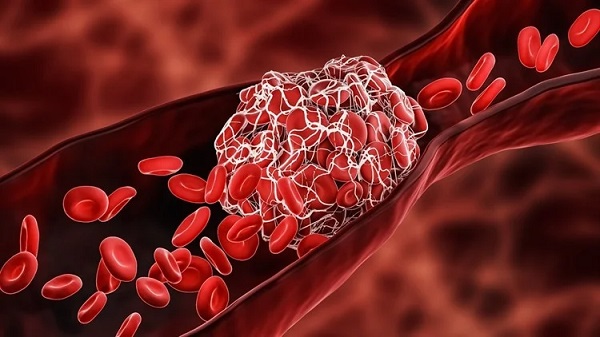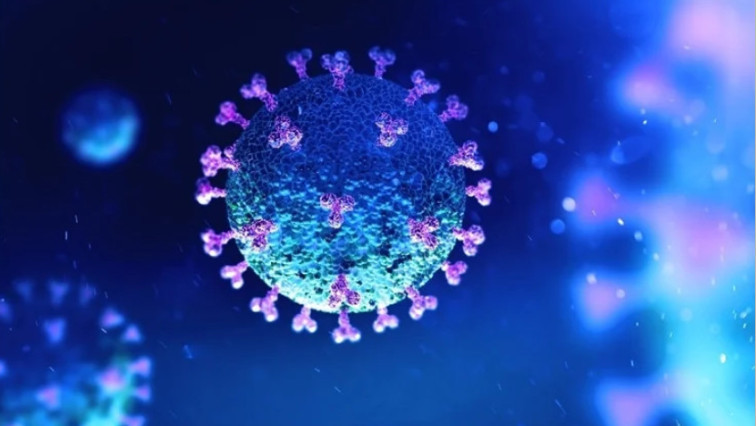The complex and unique pathophysiology of COVID-19-associated thrombosis and the hemorrhagic risks of existing thrombolytic agents have warranted the development of new therapeutic options. Nanoparticles protect biological molecule degradation and enable targeted and on-demand delivery to the site of interest, and therefore, may expand the therapeutic landscape of COVID-19.

The potential impact of nanomedicine on COVID-19-induced thrombosis.
About the review
In the present review, researchers reviewed data on nanoparticles for the treatment of severe acute respiratory syndrome coronavirus 2 (SARS-CoV-2) infection-induced thrombo-inflammation.
Pathophysiology of thrombosis observed in SARS-CoV-2 infections
COVID-19 results in vascular endothelial damage heightened immunological responses with systemic inflammation, complement activation, and the formation of neutrophil extracellular traps (NET), known as NETosis, followed by neutrophil recruitment to the site of injury. The events lead to thrombus formation by upregulating tissue factor, thrombin, and platelet activation. Other coagulation biomarkers, such as von Willebrand factor (vWF), tumor necrosis factor-alpha, and factor VIII, are involved.
Elevated plasminogen activator inhibitor 1 levels also prevent clot breakdown or thrombolysis by inhibiting endogenous thrombolytic processes. Thrombin facilitates the cleavage of fibrinogen to fibrin, which, combined with activated platelets and red blood cells (RBCs) forms a thrombus. NETosis is unique to COVID-19-induced thrombosis pathophysiology and has been documented for nanoparticles comprising gold, manganese oxide, silver, iron oxide, cationic lipids, graphene oxide, nanodiamonds, and polystyrene.
Design approaches for thrombolytic agent delivery using nanoparticles
The introduction of thrombolytics into nanoparticles reduced the total dose (thereby reducing hemorrhagic risks) and increases the effective dose by increasing circulation time and preventing premature enzymatic degradation. Additionally, nanoparticles can function as templates to incorporate added functionality, such as the responsive release of drugs and active targeting without altering loading capacities, further enhancing efficacy and lowering adverse effects.
Nanoparticle types include liposomes, cell-derived vesicles, polymeric nanoparticles, and inorganic nanoparticles. Liposomes comprise unilamellar vesicles and are easily synthesized, scalable, have high loading capacity, and have been commercially successful. However, liposomes have short circulation times and degrade rapidly.
Cell-derived vesicles may be platelet-derived or red blood cell (RBC)-derived, have acceptable biocompatibility, loading capacity, long circulation time, and inherent targeting abilities but involve complex synthesis methods and have poor scalability. Polymeric nanoparticles [e.g., poly (lactic-co-glycolic acid)] nanoparticles may comprise solid cores or polymersomes and similar properties as liposomes but provide increased control regarding the release of drugs than liposomes.
Inorganic nanoparticles may be solid or mesoporous, easy to synthesize, scalable, stable, and multifunctional, but they may be toxic and can load solids on their surfaces only. Cell-derived vesicle nanoparticles comprise endogenous surface ligands and receptors present naturally and are highly biocompatible; however, their scalability is challenging.
Targeted delivery (ligand-mediated and inherent nanoparticles targeting platelets, fibrin, and RBCs) and responsive delivery [involving secreted phospholipase-A2 (sPLA2) and thrombin release from clots] can enhance thrombolytic specificity and efficacy. Inherent nanoparticles have high multifunctionality, facilitating the production of sophisticated nano-delivery systems without complicating synthesis and using a magnetic field or near-infrared radiation at the thrombosis site. Mesoporous nanoparticles have higher drug-loading capacities than solid ones.
Localized nanoparticle accumulation can be attained by decorating them with ligands (including peptides, antibodies, polysaccharides, and cell membranes) with affinities for thrombi constituents. Common targets of such ligands include platelet αIIb/β3 and P-selectins, vWF, fibrin, erythrocyte glycophorin A, and tissue plasminogen activator (tPA).
Peptide ligands are small-sized, economic, scalable and less immunogenic but have poor stability, low binding affinities, and require spacers. Antibody ligands such as NIB 1H10, and Ter119 have the highest affinity, and highest specificity, but are probably immunogenic, have high production costs, and need accurate orientation. Polysaccharide ligands possess anticoagulant properties, have high affinity, can be synthesized easily, and are approved by the Food and Drug Administration (FDA). Cell membrane ligands have high affinity, long circulation times, and can recognize several molecules; however, membrane source and activation must be considered, and scalability is poor.
Mechanisms of immunosuppressant nanoparticles and antiviral nanoparticles
Virucidal nanoparticles (comprising silver, polylysine, or glycyrrhizic acid) have cationic surfaces, that interact with the anionic surface of SARS-CoV-2, and subsequently, the SARS-CoV-2 envelope breaks down. SARS-CoV-2-confining nanoparticles bind competitively to the virus via surface angiotensin-converting enzyme 2 (ACE2) receptors, preventing host cellular infection. ACE2-presenting membranes may be derived from nephrocytes, macrophages, or pulmonary spheroid cells.
The surface of immunosuppressing nanoparticles is loaded with recombinant human deoxyribonuclease (rhDNase), which causes deoxyribonucleic acid (DNA) strand lysis for mitigating excessive NET formation. Therefore, the excessive immunological responses against SARS-CoV-2 could be reduced, probably aiding in the prevention of thrombosis induced by SARS-CoV-2 infections.
Overall, the review findings highlighted design approaches within the field of nanomedicine with high translatability, and which could be adapted to treat COVID-19-induced thrombosis.
Read the original article on News Medical.







